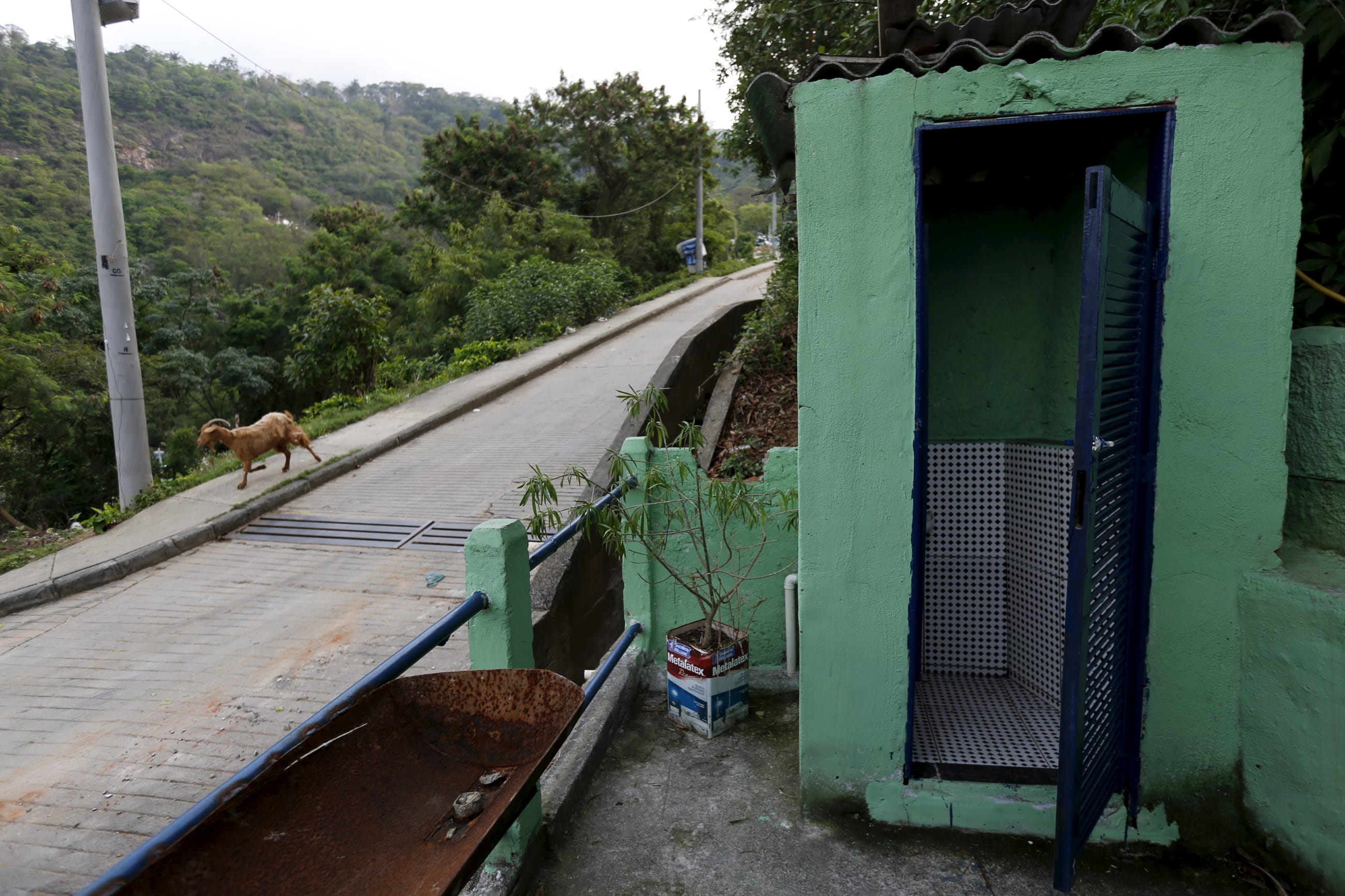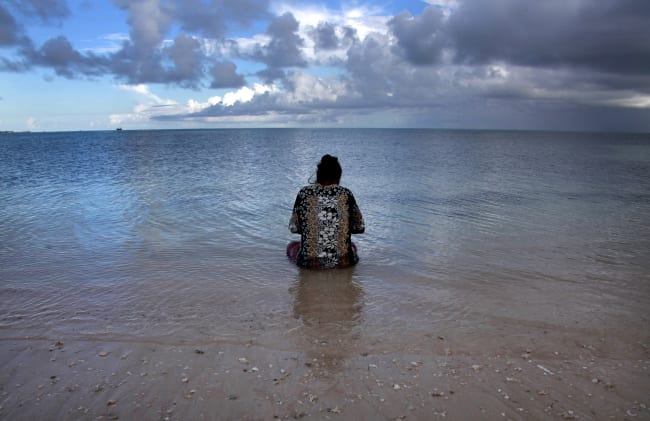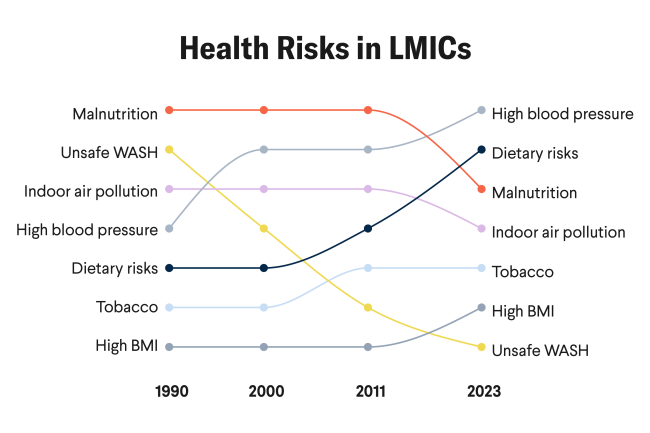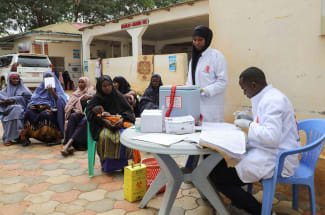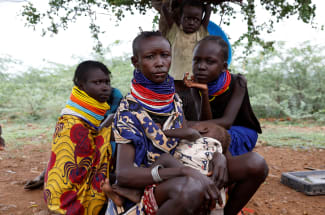Every year on November 19, the United Nations commemorates World Toilet Day to recognize that sanitation protects people from diseases and keeps the environment clean. This year's event, "sanitation in a changing world," carries particular weight given that it overlaps with the thirtieth Conference of the Parties (COP30). As leaders convene in Belém, Brazil, home to the Amazon's water abundance but also sanitation scarcity, they have an opportunity to bridge discussions of waste and climate.
COP30 presents a unique opportunity for countries to incorporate resilience to water, sanitation, and hygiene (WASH) into their nationally determined contributions and national adaptation plans. Nearly half of the world's population—3.4 billion people—lack safely managed sanitation services. Alongside policy reform, climate finance should be explicitly earmarked for WASH adaptation and resilience. These funds should be transparent, accountable, and tracked within national adaptation portfolios.
Governance, service delivery systems, and ongoing maintenance should also be at the core of financing strategies to ensure sanitation services survive and recover from economic shocks. This ploy requires scaling up proven climate-appropriate technologies—such as floating latrines, decentralized waste treatment, and bio-toilets—tailored to diverse geographies and risk profiles.
The Belém Health Action Plan [PDF], adopted in the lead-up to COP30, offers a framework for building climate-resilient health systems through innovation, evidence, and inclusive governance. Yet the plan only gestures at water, sanitation, and hygiene and fails to provide concrete strategies for improving access to clean water—despite its foundational role in disease prevention, health equity, and resilience.
Where Climate and Sanitation Intersect
Climate change and sanitation have a bidirectional relationship. Climate hazards destroy infrastructure. Floods can damage sewage infrastructures such as pit latrines, and droughts make water-based toilets unusable. Rising sea levels endanger coastal treatment plants. For example, in southern Malawi, more than 1 in 5 households experienced wastewater disruption during climate shocks.
That is why safe toilets are not optional amenities but core climate infrastructure
Meanwhile, mismanaged waste contributes to methane emissions [PDF], further warming the atmosphere and accelerating glacier melt and sea-level rise. In Nepal, a hotspot for ice eradication, 76% of rural water supply systems show very low to medium climate resilience. Experts have identified 25 design features that can make sanitation systems more climate-resilient, from mitigating exposure to hazards to facilitating rapid recovery.
In Brazil, Pará Governor Helder Barbalho emphasizes the impact of climate change on poverty, stating that without adaptation, the man-made phenomenon becomes a multiplier of poverty. That is why safe toilets are not optional amenities but core climate infrastructure: They must be planned, financed, and built to stay functional during floods, droughts, heatwaves, and storm surge—and to recover quickly when shocks occur. The scale of unmet need underscores the urgency.
Today, 354 million people worldwide lack access to toilets and are forced to defecate in the open, often in dangerous and undignified conditions worldwide. In India, 12.5% of households—approximately 162 million people—lacked access to a toilet in 2022 and 2023; many of these people live in urban slums or rural villages. Along Bangladesh's vulnerable coastline, where climate change already brings saltwater intrusion and devastating floods, 43.3% of households lack improved sanitation.
Across Brazil, coverage has improved but remains uneven. The 2022 census found that 62.5% of residents lived in homes connected to a sewer network; 24.3% (49 million people) still relied on precarious sewage solutions; 0.6% lived in homes without a bathroom. The northern region remains the least served, reflecting deep regional disparities.
In Belém, COP30's host city, reports indicate that only 19.9% [PDF] of the population have access to sewer services—relative to the statewide average of 8.7%—leaving 80% of residents without sewage collection. The Instituto Água e Saneamento also emphasizes flood risks—4.2% of households face inundation—and notes the lack of local risk maps and hydrological alert systems. Those factors highlight the need for proper sanitation planning and financing as climate infrastructure.
The cost of poor sanitation is devastating. Approximately 800,000 people die every year from preventable deaths linked to inadequate sanitation, including 1,000 children under the age of 5 every day. Climate change exacerbates this issue: Compound drought and heatwave events increase the risk of childhood diarrhea by 40%. According to the 2025 Lancet Countdown, nearly half of the global land area experienced extreme drought in 2023, and climate-induced health risks are increasing across all demographics.

Somalia's 2023 cholera outbreak—18,300 cases and 46 deaths—illustrates this deadly intersection of sanitation gaps, displacement, and climate-driven droughts. Yet the economic case for investing in water, sanitation, and hygiene (WASH) interventions is overwhelming: Every dollar spent on sanitation returns $5.50 in economic benefits. Conversely, inadequate sanitation contributes 6.2 million tons of nitrogen pollution annually and incurs significant financial costs.
Building Resilience Through Innovation
Despite these challenges, remarkable innovations are emerging and can serve as a model to other nations. In Indonesia's Pulau Sembilan island chain, coastal communities developed cost-effective floating latrines that adapt to their unique environment. In India's urban slums, bio-toilets offer safe sanitation while mitigating gender-based safety risks. Ecological sanitation systems are recovering nutrients and energy from human waste, transforming disposal problems into resource recovery opportunities in several countries, among them Bangladesh, Burkina Faso, Ethiopia, and South Africa.
Community-led approaches are especially effective. Bangladesh's participatory training programs resulted in a 25 percentage point increase in knowledge about hygienic latrines. Along the country's climate-vulnerable coast, participatory assessments lead to locally driven adaptation planning. In Vanuatu's marketplaces, where 93% of vendors are women, researchers identified markets as key leverage points for inclusive WASH access. Because women and girls are disproportionately exposed to unsafe or inaccessible sanitation—and face greater safety and health risks when services fail—focusing on them in these community hubs turns upgrades into drivers of equitable, climate-resilient WASH.
Indonesian cities are coproducing climate-resilient sanitation plans through collaborative processes that build governance capacity for long-term sustainability. In Tanzania, Dar es Salaam's unplanned areas, improvements in manual emptying safety, and decentralized treatment show that progress is possible.
COP 30: A Critical Moment
All countries should take part in solutions for climate change and sanitation. Sanitation policies should prioritize those most at risk—women, girls, people with disabilities, and displaced populations—with dedicated funding and indicators to track progress. Reliable and climate-sensitive data systems are urgently needed to inform investments, prevent duplication, and ensure maximum impact.
The Belém Plan's commitment to developing climate-health metrics should include sanitation-specific indicators, such as the percentage of safely managed sanitation coverage, climate-related disruption days of sanitation service per 10,000 people, and the sanitation greenhouse-gas footprint in CO₂ emissions per capita. Without metrics, progress will remain challenging to evaluate and difficult to finance or sustain.
To entice country participation, public opinion needs to be taken into consideration. COP30 is moving toward that, and will feature a public Green Zone—an unprecedented opportunity for civil society, researchers, and sanitation champions of all ages—even those without accreditation—to engage. This platform should be used to elevate sanitation from a silent crisis to a shared global priority.
The government should support communities to codesign solutions. Examples from Bangladesh, India, and Vanuatu show that local leadership multiplies impact. The global health security argument is compelling: Disease outbreaks don't respect borders. Somalia's cholera crisis is affecting regional stability and could spread internationally.
The Belém Health Action Plan offers a blueprint for bridging climate and sanitation—but it will only succeed if sanitation is clearly defined within its targets, finance, and monitoring systems.
